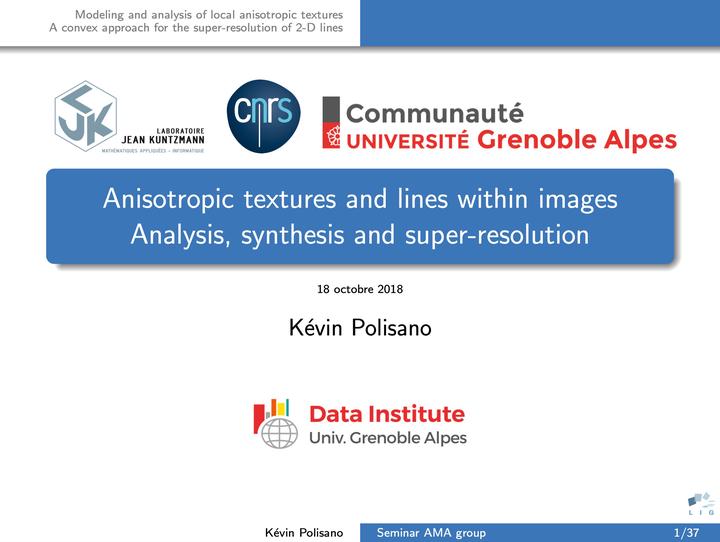LIG seminar 2018

Abstract
Analysis and synthesis of numerical images hold the interest in many areas such as medical imaging, astrophysics and biology. The objectives of image processing are to improve the visual content, or to extract relevant information. In this talk, we are interested in the characteristics of orientation within images. Two types of oriented structures have been studied: linear geometric structures and texture images, involving different deterministic and random mathematical tools.
- Texture modeling is a challenging issue of image processing: while it is difficult to give a strict mathematical definition of textures, most proposed methods tackle their analysis and synthesis using random fields. In many cases, the model has to incorporate some important features of the data as roughness or anisotropy properties. We propose in this stochastic framework two new models which enable to control both the local orientation and roughness of the texture. We study theoretical results of these models and describe their properties. We also give a sense to the notion of orientation for a large class of Gaussian random fields.
- Geometric structures, such as edge or lines, have to be detected for identifying objects in images. We present a new convex formulation for the problem of recovering lines in degraded images. Following the recent paradigm of super-resolution, which uncover fine scale information lost in the data beyond the Nyquist resolution limit, we formulate a dedicated atomic norm penalty and we solve this optimization problem by means of a primal-dual algorithm. This parsimonious model enables the reconstruction of lines from lowpass measurements, even in presence of a large amount of noise or blur. Furthermore, a Prony method performed on rows and columns of the restored image, provides a spectral estimation of the line parameters, with subpixel accuracy.
Date
Oct 18, 2018 9:00 AM
Event
talk
Location
Grenoble